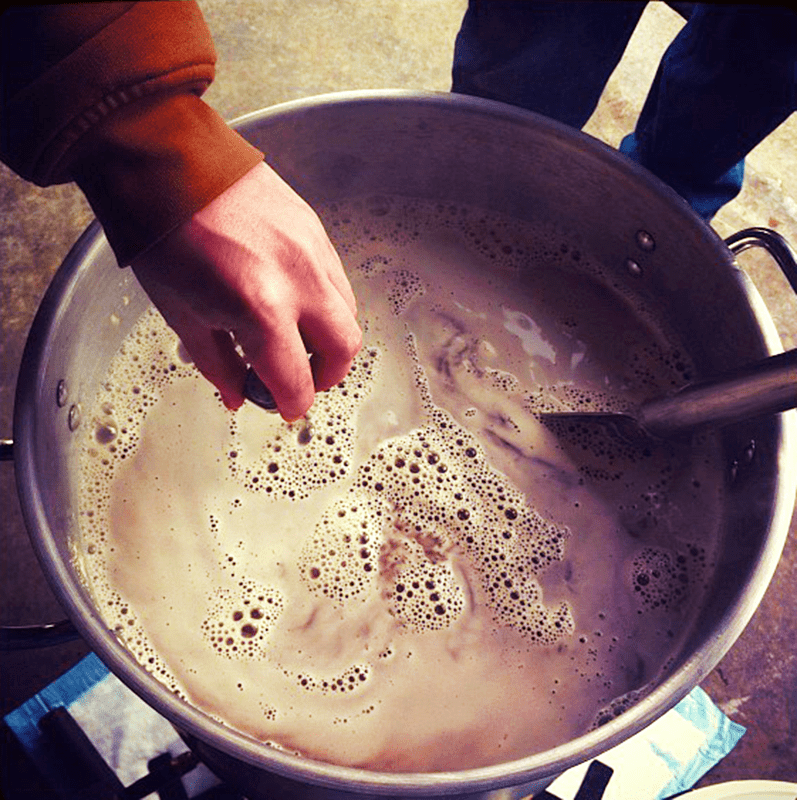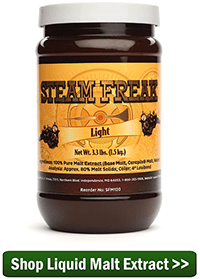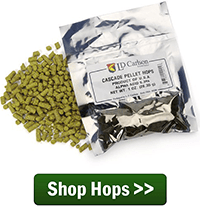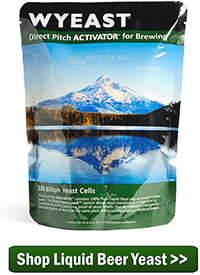 Barleywine is an English style of high gravity ale. A typical barley wine recipe will have loads of malt and extra hops to create a full bodied beer that approaches wine in its alcohol content. Because of the high alcohol content, barleywines are often consumed in the cold weather. They also age well. Brew a barleywine recipe now and be sure to save some bottles for future winter holidays and special occasions!
Barleywine is an English style of high gravity ale. A typical barley wine recipe will have loads of malt and extra hops to create a full bodied beer that approaches wine in its alcohol content. Because of the high alcohol content, barleywines are often consumed in the cold weather. They also age well. Brew a barleywine recipe now and be sure to save some bottles for future winter holidays and special occasions!
Looking for a ready-to-brew barleywine recipe kit? Steam Freak Barnstormer Barleywine may be just what you’re looking for! If you’d like to create your own barleywine recipe, consider the tips below.
Creating a Barleywine Recipe: Vital Stats
First, think about whether you’d like to create an American or English barleywine recipe. Traditional English barleywines tend to be a little more malt forward than the American versions. English barleywines will still have a significant amount of bittering hops and will focus on English varieties (like Kent Goldings and Fuggles), while American barleywines tend to use American hop varieties (like Cascade) and will probably have more significant late boil hop additions.
Here are the BJCPs statistics for comparison:
English Barleywine Recipe Profile:
OG: 1.080 – 1.120
IBUs: 35 – 70
FG: 1.018 – 1.030
SRM: 8 – 22
ABV: 8 – 12%
American Barleywine Recipe Profile:
OG: 1.080 – 1.120
IBUs: 50 – 120
FG: 1.016 – 1.030
SRM: 10 – 19
ABV: 8 – 12%
Malt
Barleywine ale requires a significant amount of fermentable ingredients to achieve the higher levels of alcohol. Many all-grain brewers will supplement a normal volume of grain with additional malt extract and/or sugar in their barleywine recipes. This allows them to perform a mash that fits in their all-grain system and still collect a decent volume of wort of the appropriate gravity. Aim for an OG of at least 1.090.
All-grain brewers: Using a pale ale malt as a base, add up to 10-15% specialty malts for color and flavor complexity. A Munton’s mild ale malt would be a good choice of base malt for a traditional barley wine. To create a more fermentable wort, mash the grains at the low end of the range, at about 150°F.
Extract brewers: will need three cans of liquid malt extract to achieve the gravity needed for this brew. Try a combination of light, Munich, and amber LME and steep some crystal malt to get the malt complexity that’s characteristic of barleywines.
Hops
To balance the enormous malt bill, barleywines are balanced by a generous dose of bittering hops. Higher alpha acids hops, such as Chinook, work well for this purpose. At least an ounce will be needed in the early part of the boil, probably two. If bittering with a lower alpha acid hop, such as East Kent Goldings (a traditional English variety), use at least three ounces for a five gallon recipe. Four or five ounces of bittering hops would be better.
In barleywines, hop flavor and aroma vary quite a bit. An American-style barley wine will likely have more hop flavor and aroma than an English one. Think about your taste preferences and add late addition hops accordingly. Centennial and Cascade are popular choices to add to an American barleywine recipe. Fuggles and Willamette are also good options.
Dry hopping is common and traditional for English ales. Consider adding 1-2 oz. dry hops (or more based on your preference) up to a week in advance of bottling.
common and traditional for English ales. Consider adding 1-2 oz. dry hops (or more based on your preference) up to a week in advance of bottling.
Beer Yeast
Be prepared for a long fermentation. Barleywines are also typically aged. If you want your barleywine to be ready for Christmas or New Year’s, plan to start your barley wine recipe at least two or three months in advance of when you plan to serve it. Many American and English ale yeasts will work. The best yeast for a barleywine recipe, I have found is Wyeast 1728: Scottish Ale. You may also want to consider Wyeast 1056: American Ale, or even a combination of the two.
For brewing a high gravity beer, it’s essential to pitch enough beer yeast to complete the fermentation. Be sure to prepare a yeast starter (you’ll probably need about three liters) and aerate the wort well prior to pitching. Alternatively, use three packs of liquid beer yeast in order to have enough yeast cells. It may be necessary to pitch a second yeast (possibly a different strain) when racking into secondary fermentation, so it might be a good idea to have some Safale-S04 or Safale-S05 on hand.
Ray Daniels points out the traditionally, brewers would rouse, or stir up the yeast throughout the secondary fermentation to make sure that it remained active:
“One favored method of rousing was to take the large secondary fermentation casks for a “walk.” Periodically, each cask would be taken out and rolled around the brewery courtyard a few times to achieve the necessary awakening of the yeast.”
Sounds like a good way to get some exercise!
Do you have experience with brewing a barleywine recipe? What tips do you have to share? We’d love to hear them!
—–
David Ackley is a beer writer, brewer, and self-described “craft beer crusader.” He holds a General Certificate in Brewing from the Institute of Brewing and Distilling and is founder and editor of the Local Beer Blog.
